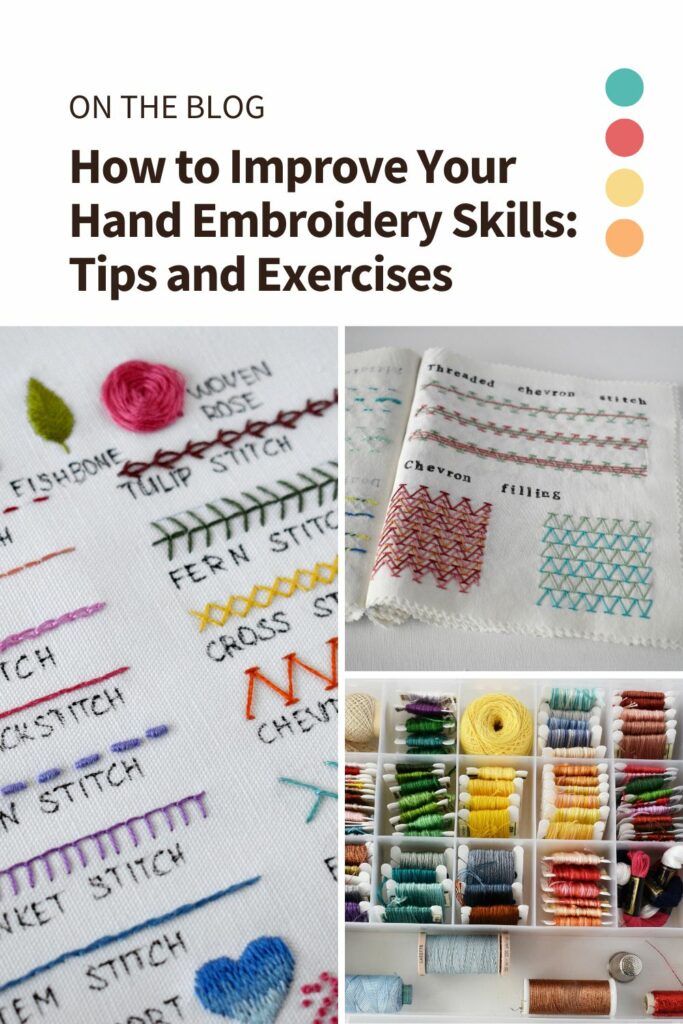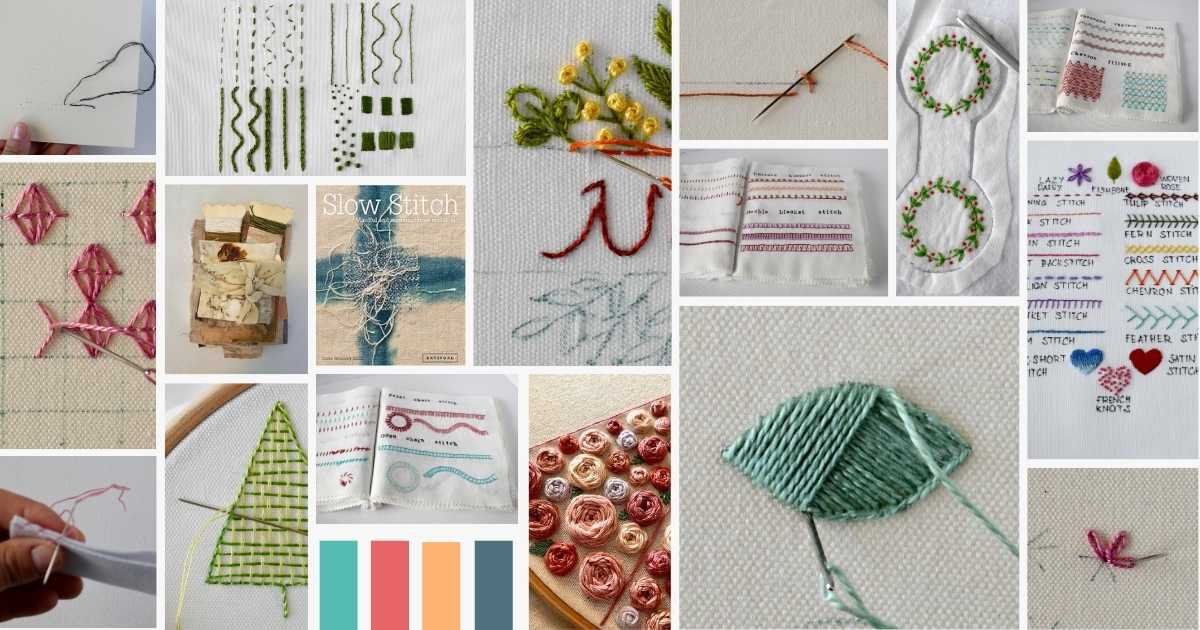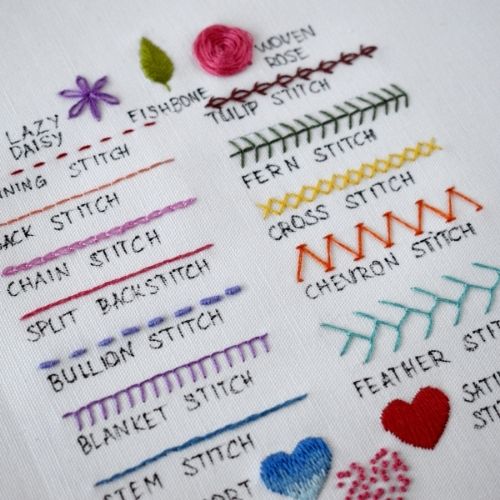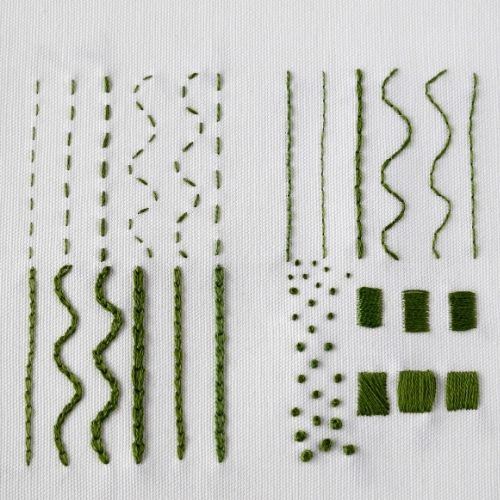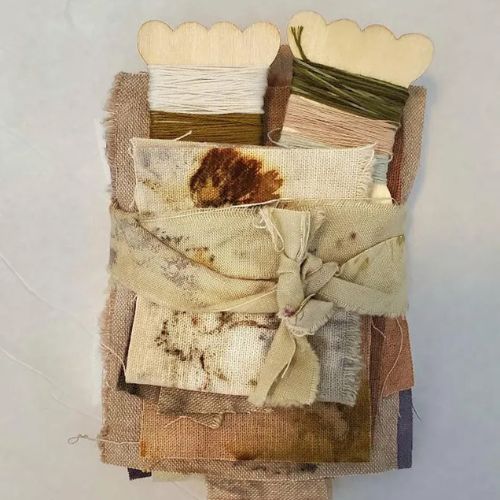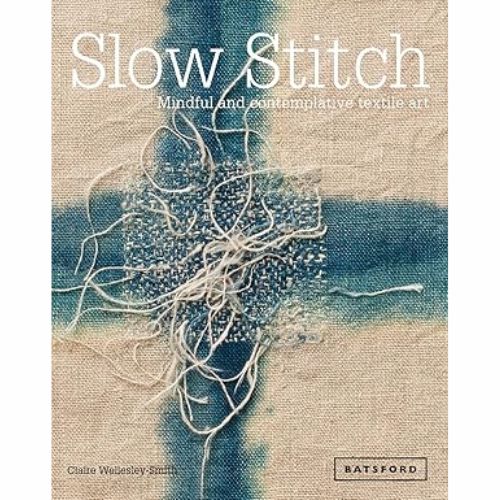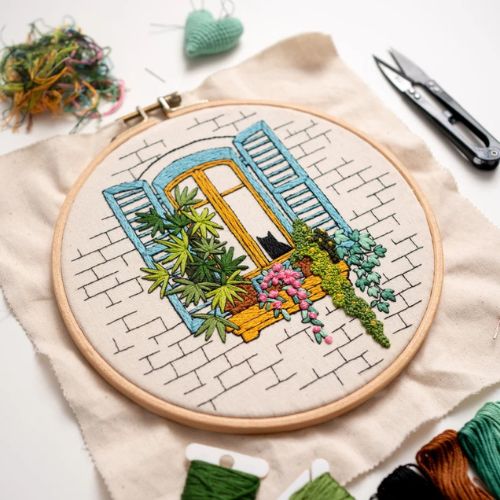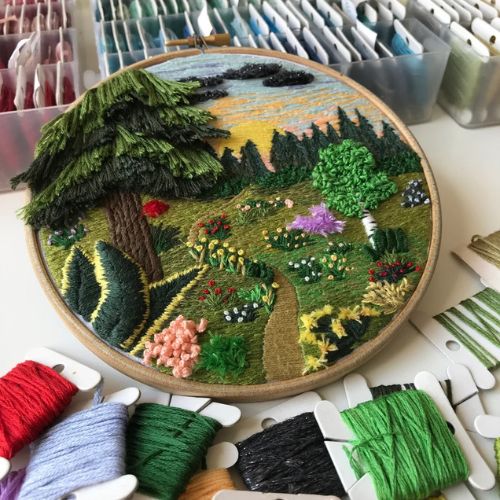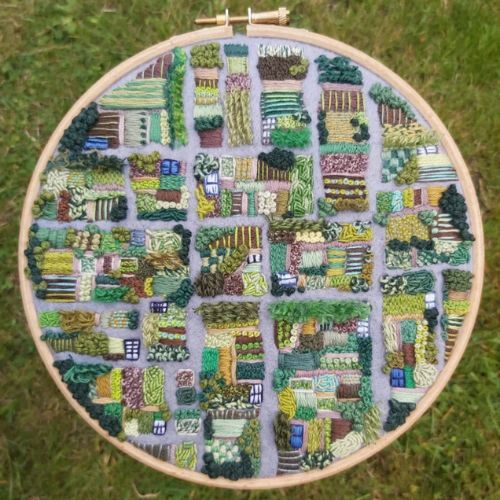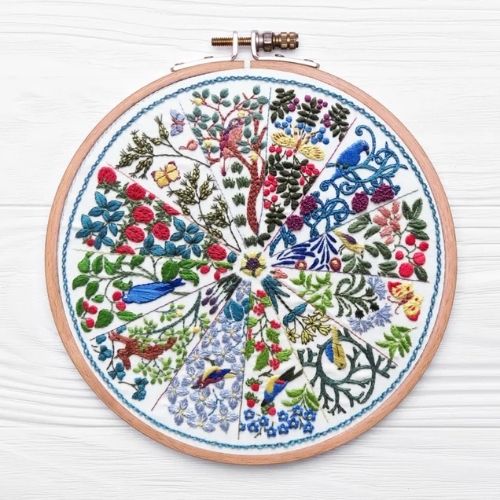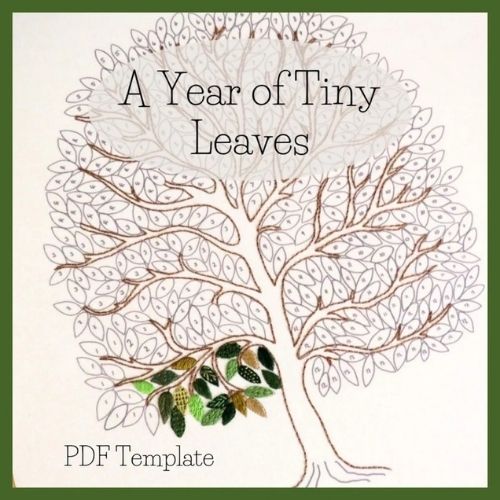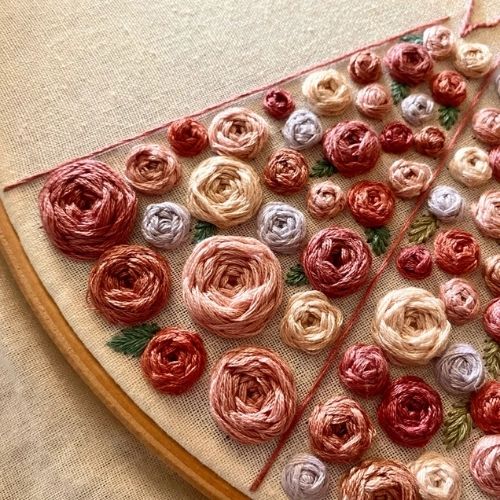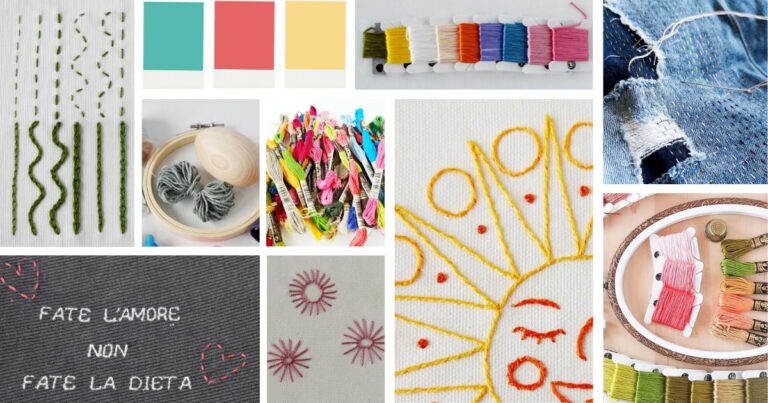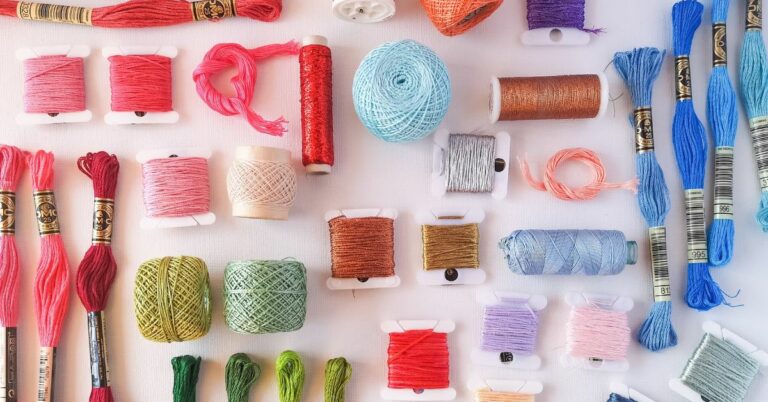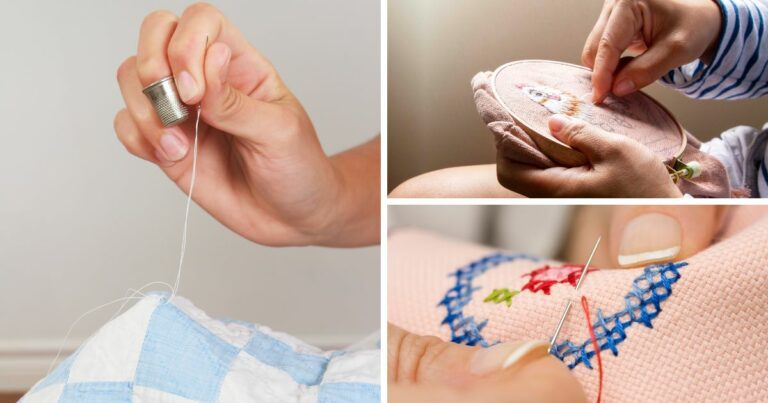How to Improve Your Hand Embroidery Skills: Tips and Exercises
Why is embroidery so hard? – I see this question asked a lot in various craft groups and forums. In my opinion, it is not that hard. It just requires time and patience to build up and improve your hand embroidery skills.
“Skill is only developed by hours and hours of work.” – Lewis Hamilton
No matter what your craft is – hand embroidery, knitting, painting, or racing. You must put hours of practice into it to get good at it.
Hand embroidery exercises for developing skills, patience, and perseverance
Hours of work are required to improve your hand embroidery skills, but it does not have to be boring stitching day in and day out. Here are some ideas that will help you develop your stitching skills with fun and joy.
Stitching samplers
Create small stitch samplers that focus on specific stitches or techniques. Practice stitching each stitch repeatedly to improve consistency and precision. This exercise encourages patience as you strive for even stitches and perseverance as you work through multiple repetitions.
You can practice hand embroidery stitches by stitching with various numbers of threads or using different types of threads.
If you are a beginner, opt for basic hand embroidery stitches, like Running stitch, Backstitch, or Satin stitch. Download my free E-Book, “Five essential hand embroidery stitches for beginners,” and learn how to embroider these basic stitches.
Stitchers with more experience can try a wider range of stitches and techniques. Look at my free “18 Basic Hand Embroidery Stitches” sampler and choose the stitches to learn.
If you would like a challenge – download my free “Sampler with Stars and Sparkles for hand embroidery” and learn how to embroider 17 stars.
Slow stitching
Set aside dedicated time for slow-stitching projects. Choose a simple design or pattern and intentionally slow down your stitching pace. Concentrate on each stitch, paying attention to tension, spacing, and accuracy. This exercise helps cultivate patience and mindfulness in your embroidery practice.
Resources to inspire and help you start slow stitching practices:
Long-term projects
Take on long-term embroidery projects that require sustained effort and commitment. This could involve stitching a large, intricate design or working on a series of embroideries. By working consistently over an extended period, you develop patience and perseverance as you see your project gradually come to fruition.
Challenging designs
Select embroidery designs or patterns that are slightly above your current skill level. This pushes you to expand your abilities and requires patience as you work through more complex techniques. Break down the design into manageable sections, focusing on one at a time, to maintain motivation and perseverance.
Here are some more complex embroidery patterns that could help you upgrade your skill:
Experimentation
Allow yourself to explore new stitches, color combinations, or materials. Create a personal embroidery journal or sketchbook to try different techniques and record your progress. This exercise encourages patience as you experiment and persevere through the learning process.
You can opt for 30-day or 100-day challenge, where you try a new hand embroidery technique daily. I did a 100 Days of Stitches challenge some years ago, which boosted my stitching skills enormously. At the end of the challenge, I made a cute stitch book from the samplers I made.
Want to choose new stitches to learn? Head to the visual library of hand embroidery stitches for inspiration and stitching instructions.
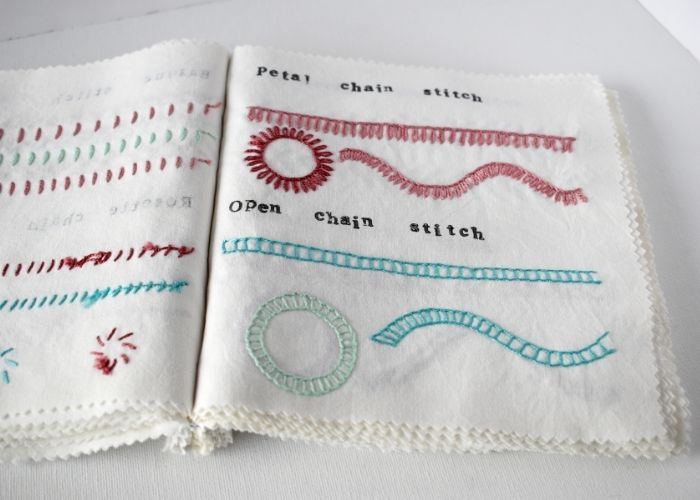
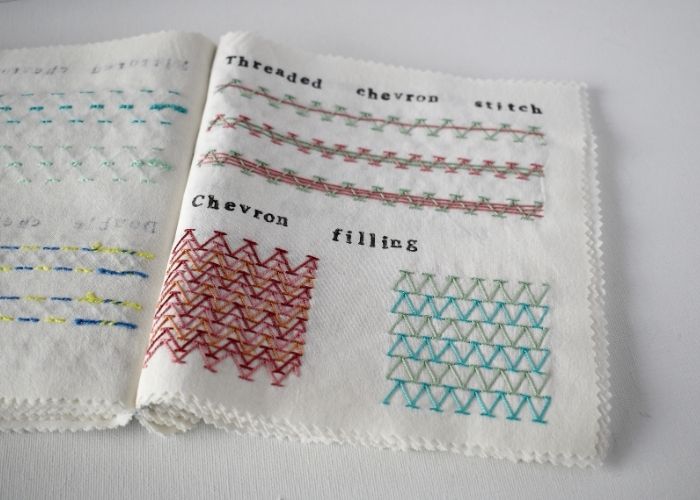
Stitching in silence or with music
Practice embroidery in a calm and quiet environment to cultivate patience. Listening to soothing or inspiring music can help create a peaceful mindset. Engaging with embroidery in a serene setting helps develop patience and perseverance as you immerse yourself in the meditative nature of the craft. You can learn more about the benefits of hand embroidery in the article “Embroidery as therapy: 8 ways hand embroidery can boost your mental health and emotional wellbeing“.
Embroidery challenges
If you lack external motivation and a nudge to keep stitching, participate in online embroidery stitch-along projects and challenges or join embroidery communities that offer regular stitching prompts or themes. These challenges encourage you to consistently engage with embroidery and provide an opportunity to persevere through the completion of various projects.
Another great inspiration for daily stitching practices is journaling with stitches. You can read more about it in my newsletter, “Journaling with Stitches.”
Here are some Stitch a long’s available on Etsy:
Over to you
“Success is the sum of small efforts repeated day in and day out.” – Robert Collier
Remember that improving hand embroidery skills and developing patience and perseverance is gradual. Reap the benefits of hand embroidery, embrace the journey, and enjoy the moments of progress along the way.
Do not aim for perfection. Be patient and kind to yourself, and make the best you can. Your current project might not be perfect, and you might start comparing yourself to other stitchers. Please, don’t! Your goal should be to have fun, relax, learn, and improve with each project, not make perfect stitches immediately.
